Bright flowers on the windowsill cheer you up even on the most cloudy day. Evergreen begonia has earned special love as a pet. This Brazilian beauty, with proper care, is ready to continuously give the owners a riot of colors.
Material Content:
Home care evergreen begonia
Breeders fruitfully worked on expanding the assortment of evergreen begonias. Lovers of bright indoor plants opened up a huge selection of shapes, sizes and colors. Several varieties of evergreen begonias look successfully on one window or balcony.
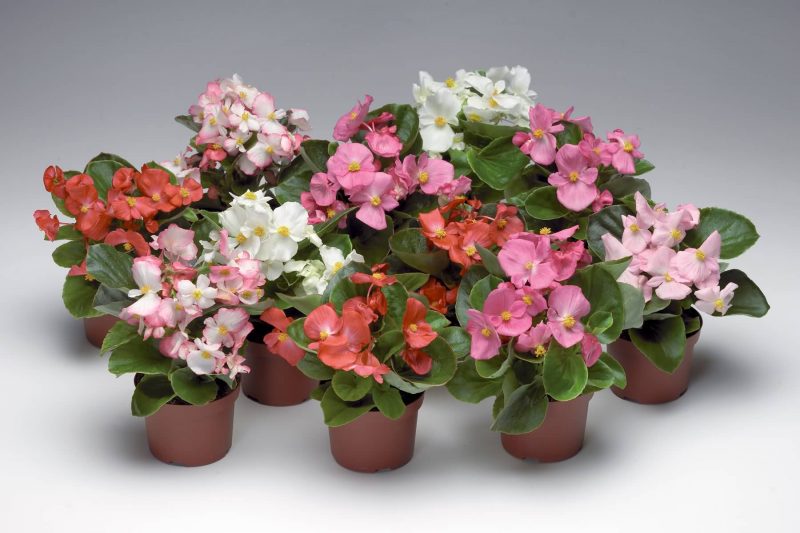
It was even possible to adapt the tropical plant to the conditions of a short and not hot summer. Such hybrids are cultivated as annuals, transferring in spring from home to garden. Most varieties are grown for several years without changing localization in greenhouses and greenhouses, as well as on window sills and balconies.
The main requirements for the maintenance of the plant are good lighting, warmth and moderate moisture.
Breaks in flowering are not observed only if the conditions are as close to tropical as possible.
Landing features: soil and pot selection
The planting of evergreen begonia is simple. Soil is poured into a container over a drainage layer created from pebbles or expanded clay. The roots of the plant are placed horizontally, covered with soil, slightly tamped, and watered. When planting several plants in one container, make sure that each of them is allocated at least 10 cm of area.
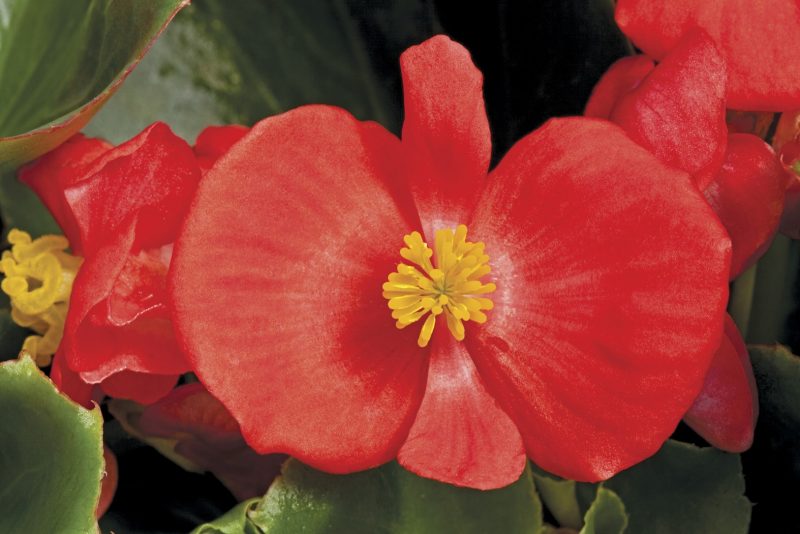
Begonia is able to develop well and bloom profusely in almost any soil.The main thing is that it is slightly acidic, loose and permeable. Nutrient deficiencies can easily be corrected with top dressing.
Suitable soil for planting begonias is usually obtained in two ways:
- A specially designed mixture is purchased.
- They collect the earth from the garden and mix it with a baking powder - vermiculite or perlite.
The root system of begonia is close to the surface. In view of this, a shallow but wide tank is selected for its cultivation.
In order not to be mistaken, listen to the following tips:
- The diameter of the container is 20-30 cm.
- The material of the container is heavy so that it does not tip over under the weight of the bush.
- Drainage holes are required.
Lighting and temperature mode
Begonia will not please with the brightness of colors, being far from the window. For year-round flowering, the plant must be exposed to light for at least 16 hours a day. This means that winter re-lighting is required. And what to do with begonia in the fall and until mid-spring, if this is not possible? It is better not to torment your pet, but to provide him with a period of rest.
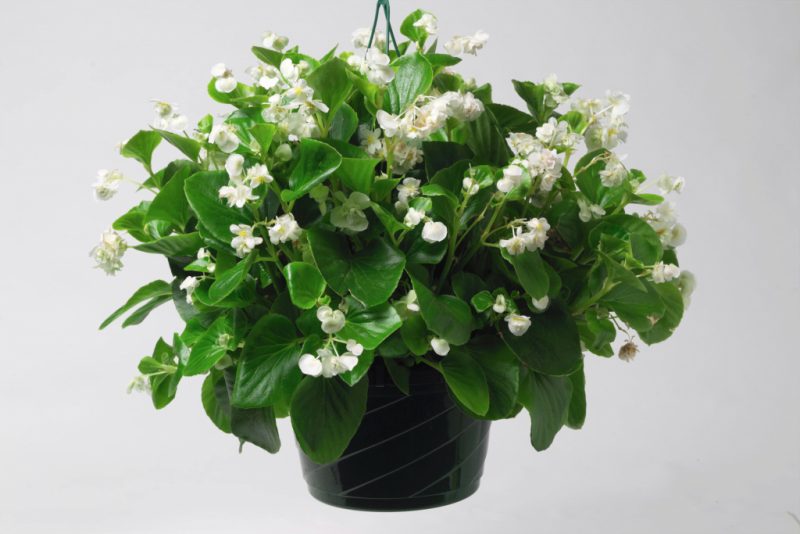
Temperature conditions are also extremely important.
To keep the begonia covered with beautiful flowers all year round, follow these tips:
- Keep the room temperature within 20 ° C.
- Shade the begonia at the height of the day, if it is on the south window, since severe overheating can destroy it.
- Protect plant roots from hypothermia.
- During the rest period (if necessary) do not lower the temperature below 12 ° C.
Watering and dressing a flower
The plant reduces decorative properties in case of moisture deficiency. But it is also important to ensure that the water does not stagnate in the pot. Watering is best done after the topsoil has dried. If a dormant period is created for the plant, the frequency of watering should be reduced at this time.

Begonia absorbs water not only roots but also leaves. To create ideal conditions for the plant, you need to put next to the tank filled with water or put a wet cloth. Begonia does not like direct spraying.
The culture is usually fed once or twice a month. For this, preparations containing a complex of minerals for flowering plants are used. If possible, it is better to use top dressing specially created for begonia.
Winter begonia care
The main task of a flower grower in winter is to provide begonias with a suitable temperature and light regime. If the growing conditions and care do not change throughout the year, lush flowering will not cease to please the eye.
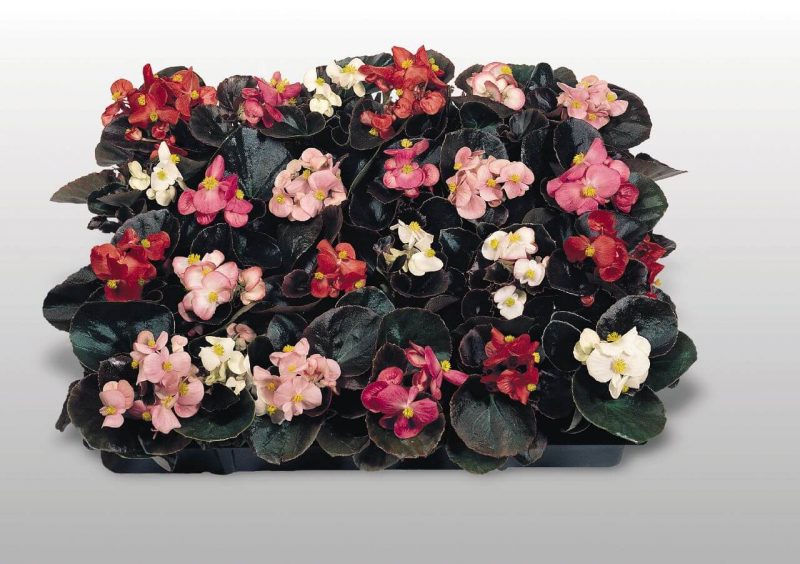
In the absence of an after-lighting system or when the temperature in the room decreases, a period of rest is created for the flower.
In this case, the following changes are required:
- rearrange the container in a cool place;
- reduce watering;
- reduce the amount of fertilizing.
With the achievement of the conditions necessary for flowering, the previous care is resumed.
Houseplant transplant
Evergreen begonias are transplanted only 1 or 2 times for the entire period when it becomes obvious that the container has become too small for the developed root system. A more spacious container is selected, remembering that the roots will grow mainly in breadth.
After a few years, the plant begins to lose its decorativeness, exposing the lower parts of the stems. In this case, transplantation will not help to restore its former splendor. The old bush is discarded and replaced with a new one.
Begonia: breeding
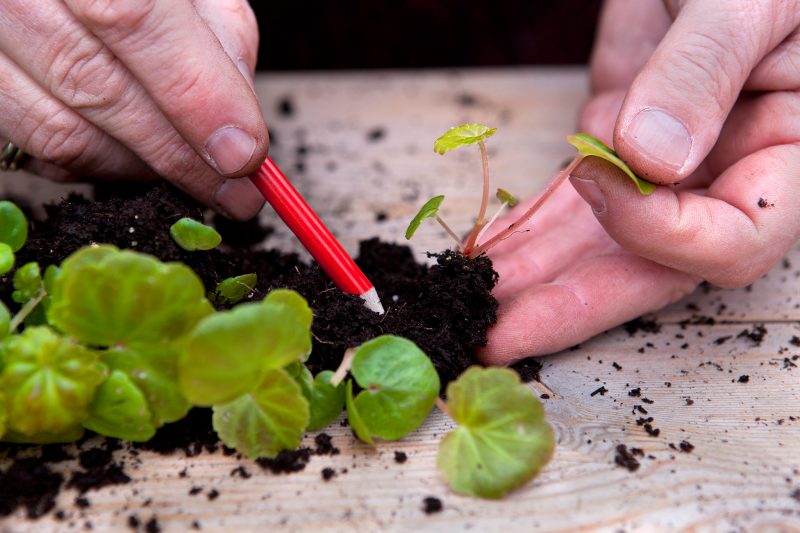
There are two ways to propagate begonia ever flowering at home:
- The seeds. This method is only suitable for varieties with simple flowers and is rarely used at home. Terry begonia ever flowering will lose its unique characteristics with this reproduction. Small seeds are scattered over the soil surface, the container is covered with a film and put in a warm place. Do not forget to spray and air, seedlings are expected. When 2-3 leaves appear on the plants, they are planted in separate containers.The temperature and watering should be reduced for a while so that the sprouts do not stretch. After a maximum of 20 weeks, begonias will bloom.
- Cuttings. Twigs 10 cm long will be required. The lower leaves are immediately removed, and the section is treated with a root stimulant. Cuttings are either put in water to get roots, or they are immediately planted in soil into which sand is added. The emergence of new shoots is a signal for planting.
Pest and Disease Control
Most often, when growing begonia evergreen at home, gardeners have to deal with powdery mildew. This is a fungal disease characterized by the appearance of white plaque on the leaves. The reason is a violation of the irrigation regime. Fighting the disease with fungicides.

Sometimes the stems or roots of begonias begin to rot. This occurs in case of low temperature while maintaining high humidity. If the plant is not severely affected, it is necessary to remove the damaged parts and raise the temperature in the room. With significant damage to the bush, healthy cuttings are cut from it, and the rest is thrown away.
With all pests of begonias (aphids, whiteflies, nematodes, etc.) it is best to deal with proven insecticides. For example, Karbofos and Intavir often come to the aid of flower growers. Processing should be carried out outside the premises so that poisons do not harm anyone.
Begonia evergreen reports about a violation in the care in the following ways:
- An elongated stem and pale leaves indicate poor lighting.
- Drying or curling leaves indicate overdried air or too intense sunlight.
- Drying buds is a sign of dry air.












